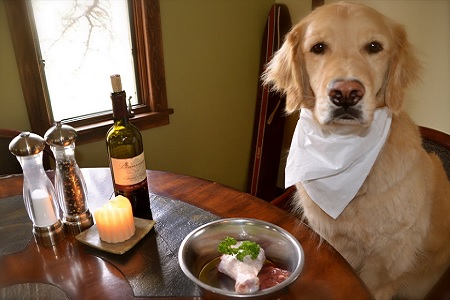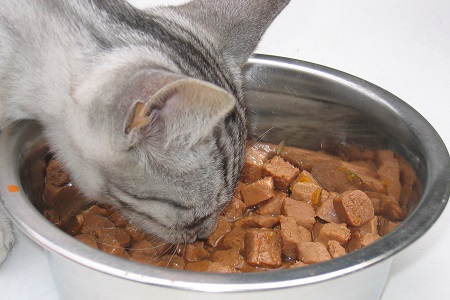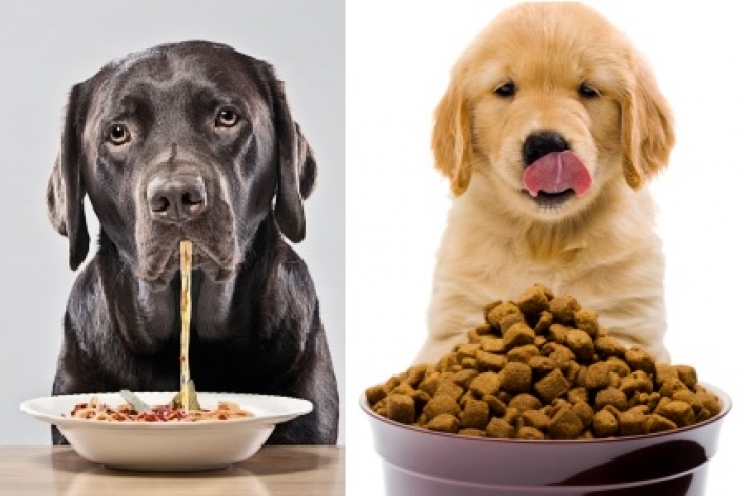One of the most frequent questions that are addressed to the veterinarian concerns the choice between a home or industrial diet, as in wet or dry foods. Let's see the pros and cons of each of these food choices.
Over the years, there has been a great spread of the pet food industry. Croquettes and tins are now part of the daily diet of our animals. In fact, few people prefer to give the dog and cat leftovers from their meals or in some cases "home-made" food cooked especially for them.
All of this has been boosted above all by the growth of food information, starting from veterinarians, up to the commercials that pass before our eyes continuously on television, in newspapers and on the internet.
On the one hand, the spread of pet food has made it possible to prevent and treat some serious problems, which were simply not mentioned before. For example, food allergies now-a-days are one of the most accepted hypotheses underlying many conditions and health problems of our animals. This is why more and more owners are choosing specific foods.
At the same time, especially the owners of a higher age group, the supporters of the home diet or simply those who deal with stray dogs and cats, choose to integrate or completely replace industrial food with homemade food.
We start from a fundamental assumption, which owners do often not take into consideration. Dogs and cats are very different from us. It would seem obvious, but it is often important to reiterate it.
Their digestive system, although broadly similar to ours, has substantial differences.
Without going into details, we must take into account the distinction between omnivores and carnivores.
We are omnivorous, so we can eat animal and vegetable origin foods without distinction.
The dog and cat, on the other hand, are carnivores, so their feeding must be based on the consumption of meat and fish. In fact, this restriction currently applies more than anything to cats, which over the centuries have remained faithful to their category of carnivores in the strictest sense.
Dogs, on the other hand, who have always been a man's best friends, have fed on the owners' leftovers for so long that their palate and digestive system have gradually changed to adapt. For this reason, we don’t classify them as omnivores, nor as carnivores, but we say that they represent a category between the two.
Therefore, regardless of which diet you choose, you need to consider these important aspects.
Homemade diet
When we talk about home diet, we must pay close attention to the meaning of this type of diet.
"Homemade", in fact, is not simply everything you boil in a pot or collect from the leftovers of our table. Those who choose a diet of this type do it with great awareness, which is, that dogs and cats have specific and different nutritional needs than ours.
 If we ate unseasoned pasta every day, for example, we would face serious nutritional deficiencies, with strong consequences on our health.
If we ate unseasoned pasta every day, for example, we would face serious nutritional deficiencies, with strong consequences on our health.
The same thing also applies to our animals.
As for the dog, we must be able to guarantee all the nutrients he needs, through a balanced and well-studied diet. Therefore, we must be able to combine animal proteins, such as meat, fish and eggs, with all the other nutrients such as vegetables and cereals.
In essence, a nice plate of pasta with meat and vegetables can be fine, as long as it is nicely cooked, to encourage the digestion of starches, and unseasoned, at most with a drizzle of raw olive oil after the preparation.
For cats, the situation is more complex, because their diet must be based mainly on meat and fish, possibly supplementing it with cereals or vegetables, (if cat finds them appealing).
The fundamental aspect of all this is that dogs and cats need an appropriate integration of vitamins, mineral salts and amino acids. In cats, this is much more evident, because they are unable to extract vitamin A from food and need constant doses of taurine, an amino acid essential for feline health.
We should also remember that we must absolutely avoid foods that are dangerous for our dog and those that are harmful to our cat.
If we are unable or simply do not have the patience to dose supplements and food rations, we will probably have to rely on pet food.
Pet food
“I would never give my dog any croquettes! Are you not aware that they only contain waste? ". This phrase is typical for home diet supporters.
In reality, those who say it, probably limit themselves to choosing cheap products only, and therefore of very low quality.
It is true that many industrial foods are by no means "rich in meat", as reported on the packaging, and that instead of that “prestigious” meat they talk about it is slaughterhouse waste. It is also true, however, that if we want a quality product, we will have to pay more.
Some industrial feeds, in fact, are specially designed for all the nutritional needs of dogs and cats. A good or high quality feed actually contains meat or fish, in well balanced doses.
In addition, the croquettes and tins also have the right integration of vitamins, mineral salts and amino acids that must never be lacking in the nutrition of the cat, as well as the dog.
Indeed, pet food advocates focus on animal health. A food that can provide everything the dog or cat needs during the day is comfortable for the owners and healthy for the animal.
In addition to this important point, we must also consider the wide range of products on the market. Food for puppies, adults, the elderly, pregnant, sterilized, long-haired, short-haired and obese are up to date and there is no need to even search among the most expensive brands.
If we add the fact that feeds are now also studied to help animals with health problems, the benefits increase. This is how we can offer the right nutritional support to our friend with diabetes, food allergies, kidney problems, intestinal disorders and many other conditions and diseases.
In conclusion, for any diet you decide to go for, it is good to choose with awareness, always keeping into consideration the fact that health is always based on the well-being of the intestine first.










